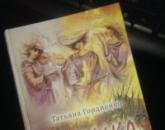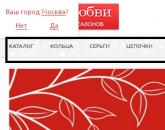Download presentation on Mongolia in geography. Mongolia is a mountainous country
Presentation on the topic: MONGOLIA Completed by: Student 10 "B" class Grigoriev Evgeny General information : Mongolia (Mongol. Mongol Uls) is a state in East Central Asia. It borders with Russia in the north and with China in the south, has no access to the sea. Area 1,564,116 km². Population - 2.832 million people (as of July 2006). There are 1.8 people per square kilometer. 85% of the population are Mongols, mainly Khalkha Mongols (including the Elzhgin and Dariganga groups (31.9 thousand, 2000), as well as the Khotogoyt Mongols, Darhats, Sartuls, Zun-Uzumchins (1700 people, 1945), Uriankhians (25.2 thousand, 2000), Khotons, Buryats (70 thousand), Shine-Barguts (about 1000 people, 1947), Zakhchins (29.8 thousand, 2000), Torguts, Bayats (50.8 thousand ., 2000), Khoshuts, Myangats, Olets, Kharachins, Chahars, Tumets), 7% - Kazakhs and Kirghiz, 4.6% - Durbets (Western Mongolian tribe) and 3.4% - other ethnic groups (Khamnigans , Russians, Chinese, Turkic-speaking Tsaatans, (Uigur)-Uriankhians, Tuvans, Kyrgyz). About 5 million Mongols live outside of Mongolia (including over 4.8 million in China). And also ... The official language is Mongolian, the older generation in the cities speaks and understands Russian. More than 85% of the population speaks Mongolian. Since 2007, the Russian language has been compulsory in all schools. Education is conducted in the Mongolian language. Traditional Mongolian writing is taught in secondary schools. The Kazakh language is studied in Bayan-Ulegei aimag. Location Country features: Economy GDP (2006): $5.781 billion Exports: copper, livestock products, goat down, wool Imports: fuel, machinery, automobiles Main trading partners: China, Russia, USA, Japan Literacy More than 90% of the population is literate Names After the revolution of 1921, surnames were banned in Mongolia as remnants of feudalism. The names consisted of two parts: the patronymic was written first, then the personal name itself. In 2000, citizens of Mongolia were allowed to take surnames along with patronymics. Army conscription system. The draft age is 18-25 years. Service life 12 months. 570,435 fit for military service in 2005. Every year 34,674 people reach military age. Military budget - 2.2% of GDP in 2002. Establishment of the state: At the beginning of the XII century, the scattered Mongol tribes made the first attempt to unite and create a state that looked more like a union of tribes and went down in history under the name Khamag Mongol. Its first ruler was Khaidu Khan. His grandson Khabul Khan was already able to win a temporary victory over the neighboring regions of Northern China, and he was paid off with a small tribute. However, his successor Ambagai Khan was captured by the hostile Mongol tribe of Tatars (later, the name "Tatars" was assigned to the Turkic peoples) and handed over to the Chinese, who betrayed him to a painful execution. Temujin came to power gradually, at first he was patronized by Wang Khan, the ruler of the Kereites in Central Mongolia. As soon as Temujin gained enough supporters, he conquered the three most powerful states in Mongolia: the Tatar one in the east (1202), his former patrons the Kereites in Central Mongolia (1203) and the Naimans in the west (1204). At the kurultai - the congress of the Mongol tribes in 1206 - he was proclaimed the supreme khan of all the Mongols and received the title of Genghis Khan. Religion The official religion of Mongolia is Buddhism (94%). As in every country, it has national specifics here. Historical evidence gives grounds to assert that, starting from the II century. BC e., the proto-Mongolian peoples (Xiongnu, Xianbei, Khitan) were familiar with Buddhism. The Mongols themselves first encountered it during the conquests of Genghis Khan (end of the 12th - beginning of the 13th century). Buddhism was practiced by four peoples whose states were conquered by Genghis Khan - the Uighurs, Khitans, Tanguts, and the Chinese. In the first half of the XIII century. the Mongol khans did not single out Buddhism among other religions and did not give it any preference. In those times, which were the period of the highest prosperity of the Mongol state, the Buddhists had to meet serious rivals at the court of the Mongol khans in the person of Muslim, Nestorian and Catholic missionaries, behind whom stood the rulers of Asian and European states. At the court of the Mongol emperor of China Kublai Khan in Khanbalik (modern Beijing), the main rivals of the Buddhists were the official court shamans. Surrounding himself with Buddhists, Khubilai showed at that time only the appearance of interest in the moral and ethical aspects of their religion. Much more attractive to him seemed the competition of Buddhists and shamans in the technique of mastering magical techniques. Monastery State structure (main) The head of state is the president, elected on an alternative basis by universal direct and secret suffrage for a term of 4 years. The President can be re-elected for one more term. Legislative power is exercised by the parliament - the State Great Khural (VGH) consisting of 76 members elected by popular vote by secret ballot for a period of 4 years. The VGH is headed by the chairman, deputy chairman and secretary general, who are elected by secret ballot from among its members. Executive power is exercised by the government, which is formed by the VGH on the proposal of the prime minister and agreement with the president. The President submits the candidature of the head of the Cabinet of Ministers for consideration by the VGH. The government is accountable to the VGH. On the ground, power is exercised by local self-government bodies: aimag, city, district and somon khurals, whose deputies are elected by the population for a term of 4 years. Coat of arms State structure (dates): Mongolia is a parliamentary republic. The Constitution of Mongolia dated January 13, 1992, which entered into force on February 12, 1992, is in force. In July 1921, the city of Urga (now Ulaanbaatar) proclaimed the independence of Mongolia. On November 26, 1924, the country's parliament (Great People's Khural - VNKh) proclaimed the creation of the Mongolian People's Republic (MPR) and adopted the first constitution. Until 1990, there was a one-party regime of the Mongolian People's Revolutionary Party in Mongolia. On November 21, 1991, the Great People's Khural decided to change the name of the country, and after the entry into force of the new constitution (February 12, 1992), the MPR became known as Mongolia. Flag of Mongolia The terrain of Mongolia has an area of 1,564,116 km² and is mostly a plateau elevated to a height of 900-1500 m above sea level. Above this plateau rises a series of mountain ranges and ranges. The highest of them is the Mongolian Altai, which stretches in the west and southwest of the country for a distance of 900 km. Its continuation is the lower ranges that do not form a single massif, which received the common name Gobi Altai. Along the border with Siberia in the north-west of Mongolia there are several ridges that do not form a single massif: Khan Khukhei, Ulan Taiga, Eastern Sayan, in the north-east - the Khentei mountain range, in the central part of Mongolia - the Khangai massif, which is divided into several independent ridges. Gobi Desert Map of Mongolia Magjid-Janraiseg Temple Genghis Khan Statue Rock Paintings Landscapes The End Thank you for your attention!!!
Mongolia is a state in East Central Asia. It borders with Russia in the north and with China in the east, south and west. Has no access to the sea. The capital is Ulaanbaatar. Area km². Mongolia is divided into the capital Ulaanbaatar and 21 aimags. Main:
The official language is Mongolian, written in Cyrillic. It is spoken by over 95% of the population. In secondary schools, traditional Mongolian writing is also taught. Mongolia is a parliamentary republic. The Constitution of Mongolia dated January 13, 1992 is in force here.




Economy Although more people live in cities, Mongolia's economy still concentrated in industries such as Agriculture and mining. Mineral resources such as copper, coal, molybdenum, tin, tungsten and gold make up a significant part of industrial production countries.

GDP per capita: $3,200. Unemployment rate: 2.8%. Exports: copper, livestock, livestock products, goat down, wool, skins, coal. Imports: fuel, machinery, automobiles, food, industrial consumer goods, chemicals, building materials, sugar, tea. Mongolia is a member of the World Trade Organization (since 1997). The main trading partners of the country are China and Russia, and Mongolia's economy is largely dependent on these countries. Mongolia imports about 95% of their oil products, and a significant share of electricity from Russia, which makes the country extremely dependent economically.



Culture The culture of Mongolia is heavily influenced by the traditional Mongolian nomadic lifestyle, as well as Tibetan Buddhism, Chinese and Russian cultures. Education is one of the priorities domestic policy Mongolia. To date, illiteracy in the country has been virtually eliminated, thanks to the creation of seasonal boarding schools for children from nomadic families.


Some of the earliest examples of Mongolian visual arts rock paintings and bronze and copper weapons with images of animals. After the revolution, for a long time the only acceptable style in Mongolian painting was socialist realism, and only in the 1960s did artists get the opportunity to move away from the canons. Mongolian literature of religious content is mostly translated from Tibetan. The oldest literary and historical monument "The Secret History of the Mongols". Contemporary Mongolian literature is under residual socialist influence as well as traditional motifs.

The instrumental ensemble occupies an important place in Mongolian music. Folk instruments: amankhur (harmonica), morinkhur (Mongolian cello) and limbo (bamboo flute). Mongolian pop music is mostly concentrated in Ulaanbaatar and little known outside of the capital. Mongolian musician plays the morin khur.

“Coin collection” - I had to carry 3.5 tons of copper coins - a dozen carts. Collection of coins. My coin collection. 3. 1. Tasks: Purpose: The metal from which the coin is made is copper. Write a description of your coin collection. Scientific novelty: 5. 6. Numismatics - the science of coins. There was no paper money in Russia then. Livestock often acted as money. 1 kopeck 1899. Practical significance:
"Mushroom World" - In our river, autumn is blue Spread a rug. Edible mushrooms. Learn to distinguish edible mushrooms from inedible and poisonous. Don't make noise in the forest - you are a guest here. Thank you. To introduce students to the diversity of the world of mushrooms. The sun rays-splinters Scatters on the foliage. White Boletus Boletus Mushrooms Oyster mushrooms Chanterelles Mushrooms Russula Volnushki. Let's collect mushrooms today, We'll have a nice lunch.
"Winter Grade 2" - Wildlife in winter. Game "Signs of winter". Lesson objectives: Crossword "What color is winter." How do animals prepare for winter? Test "Visiting winter". Questions for the crossword.
"Red Book of the world around" - We used: Feather grass. Don't pick flowers! What is the Red Book? Lily curly. Don't catch butterflies! Completed by: Migera E.V. What types of plants in Yarkovo are listed in the Red Book? We love the forest at any time of the year, We hear the slow speech of rivers ... Light. Novosibirsk region Novosibirsk region MBOU Yarkovskaya secondary school No. 3. Spring Adonis. Shot open. Anemone forest. Russian iris. "Red Book of the NSO" development of a lesson on the world around us in grade 2.
"St. Petersburg" - Peter I the Great - the first emperor of all Russia. Neva. On May 27, 1703, our wonderful city was founded. Name the main river of St. Petersburg. Admiralty. Guess! What day is Saint Petersburg's birthday? He was born in a swamp, He was baptized three times, He did not give up to the enemy, He remained a hero! Architects: Ivan Korobov Andrey Zakharov 1733 - 1823 What is depicted on the coat of arms of the city? A wonderful city. The world, Grade 2.

Mongolia
Capital- Ulaanbaatar.
Square: 1 million 564.1 thousand km² (18th place in the world).
Official language: Mongolian.
Political system- a parliamentary republic with local self-government.
head of state- President elected by popular vote (Tsakhiagiin Elbegdorj).
Head of the government- Prime Minister elected by Parliament (Sukhbaataryn Batbold).
Parliament- unicameral State Great Khural (76 deputies).
Administrative division: 21 provinces.
Time difference with Moscow: +4 hours.
Currency unit: Mongolian tugrik.



=45 KOPEEK
=11.36 RUBLES
=454.3 RUBLES




Population
Population: 2 800 114 people (133rd place in the world).
62% - townspeople.
Main nations: Mongols 90%, Kazakhs 4%, other peoples - less than 6%.
Big cities: Ulaanbaatar (1,089,358 hours), Erdenet (83,379 hours), Darkhan (74,738 hours)
Main religions: Buddhism (Lamaism), Christianity.

Population
Population density – 1,7 person/sq.km
Population growth rate: 1.5 % in year
Fertility rate: 20.9 births /1000 hours
Death rate: 6 deaths/1000 hours
Migration coefficient: 0 migrants/1000 hours





Traditional male and women's clothing- robe (deli).
Footwear - boots (gutuly).

Traditional food is meat, noodle soup and vegetables.
Drink - tea with milk, butter and salt.

Among the holidays stands out on house. Singing and dancing art, genres of oral folk art are developed.




Genghis Khan
(c. 1155 or 1162 - August 25, 1227) - the founder and first great khan of the Mongol Empire, who united the scattered Mongol tribes; the commander who organized the conquests of the Mongols in China, Central Asia, the Caucasus and Eastern Europe.

Damdin Sukhbaatar
(February 2, 1893 - February 20, 1923) - leader of the Mongolian People's Revolution of 1921, one of the founders of the Mongolian People's Revolutionary Party. Minister of War of the revolutionary government, commander-in-chief of the Mongolian revolutionary troops.

Zhugderdemidiin Gurragcha
(born December 5, 1947) - the first cosmonaut of the Mongolian People's Republic. Minister of Defense of Mongolia (2000-2004).



1 slide

2 slide
General information about the country: A state in East Central Asia. The official language is Mongolian. Area - 1,564,116 km². Capital: Ulaanbaatar. Population 2.71 million people. Full name - Mongolian Republic. The state system is a republic. In the west, south and east it borders with China, in the north with Russia. The total length of the border is 8114 km.

3 slide
natural conditions: Mongolia has a sharply continental climate with harsh winters and dry hot summers.

4 slide
Minerals: In Mongolia there are deposits of brown and hard coal, oil, iron, tungsten, zinc, phosphorites, gold, silver, uranium, asbestos, granite and marble.

5 slide
general characteristics population: The population (2009) was 2.7 million people. Most of the inhabitants (90%) are Mongols, Kazakhs - 4% of the population, Chinese - 2%, Russians - 2%. The majority of believers are Buddhists, Islam is practiced by about 4% of the population.

6 slide
Age composition: Birth rate - 32.65 newborns per 1000 people (1995). Mortality - 6.82 deaths per 1000 people. Average duration life: men - 64 years, women - 69 years.

7 slide
Migrations in Mongolia: As of 2007, 120,000 migrants from Mongolia live outside of Mongolia. Of these, the largest group is the Mongolian Kazakhs who moved to Kazakhstan - 65 thousand. 27,860 Mongols live in Korea, moreover. In the EU countries - about 10 thousand, including 7 thousand citizens of Mongolia in Germany. In the USA - 10 thousand, in Japan there are also about 10 thousand. China, Vietnam and Malaysia are also among the countries where Mongolian citizens travel.

8 slide
Branches of the international specialization of the economy: Industry: share in GDP - 32%. The extraction of coal, copper, molybdenum, tin, uranium, and fluorite is well developed. Electricity production - 2.6 billion. Processing of livestock products; metalworking and woodworking enterprises. Production of building materials.
Popular
- The technical audit includes
- Technical audit of the enterprise and features of its providence
- Scrap steel construction specifications GOST Scrap steel construction specifications
- Requirements for the quality of sawdust used as a raw material in the production of fuel pellets - document types and sizes
- Business plan mini refinery distillation unit
- T shaped keys for hex bolts gost
- Mineral powder for asphalt concrete and organo-mineral mixtures
- The ten fastest lenses What does lens aperture mean
- Shift method What does shift schedule mean
- How to create an effective company slogan




